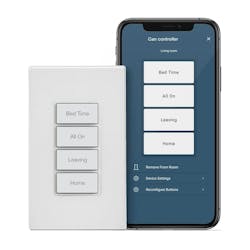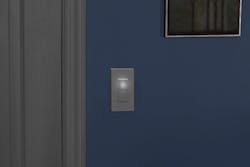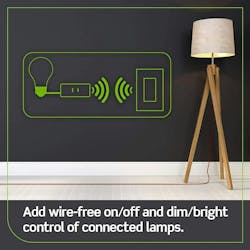Independent Living and Aging in Place: Is Smart Home Technology the Key?
Although incorporating high-tech solutions can be daunting for many, there’s been a significant shift in behavior from the Baby Boomer generation that builders can be sure to take note of: more are relying on voice-activated and easy to-use devices, both in the home and beyond.
Older adults have progressively become more comfortable with technology like video-chat, smartphones, iPads and smart TV’s and their homes need the connectivity to support these devices. This trend has been ongoing, but the pandemic has helped expose everyone to the benefits and possibilities that come with technology. More specifically, older adults are testing out smart home devices like Amazon Echo, Google’s Nest Audio, Apple HomePod mini’s, smart lightbulbs and smart plugs, according to a recent Kiplinger study.
Seniors have discovered how simple smart home technology can be, especially when leveraging voice activation functions. Ownership of these smart devices continues to grow in adults aged 50 to 70 and according to AARP’s 2021 Tech Trends Report, the rate of adults aged 50+ that own smart home devices almost doubled in a year, from 10% in 2019 and 19% in 2020. Smart home technology has shifted from a nice-to-have for the home, to a necessity and it’s expected to continue on this trend for demographic groups that are living independently and those with disabilities. These simple upgrades in hope can make clients safer and more relaxed in their own homes.
As older adults continue to age in place and familiarize themselves with advanced technology, there are three notable ways that smart home upgrades have and will continue to facilitate independent living, and are easy for builders to implement.
1. A Healthy Home Environment
Many of us have witnessed numerous lessons about preserving our health in the past year, germ transmission prevention at the forefront. As we continue to adjust to a new lifestyle with masks and social distancing, many are recognizing that precautions don’t need to stop inside the home. For older consumers that may be immunocompromised or considered to be high-risk individuals, simple fixes like hands free devices make a significant impact. Devices that allow for voice activation and control give users flexibility to turn lights on and off without needing to maneuver through a house, while also reducing the risk of picking up germs. For an added layer of protection, devices can also promote a healthy home right at the source. Antimicrobial Treated Devices help ensure a cleaner switch or wallplate by inhibiting the growth of mold, mildew, fungi, and other bacteria found on frequently used devices.
2. Living Independently and Safely
Smart home technology has evolved to address the safety concerns that so many seniors have.
For individuals who struggle walking, have shaky hands or declining vision, devices that are low-interaction and don’t require struggling with small keypads or buttons are the most helpful. According to the AARP study, 37% of older adults already lack confidence when using smart technology, which often can hinder the experience. Implementing user-friendly and simplistic devices while maintaining safety and comfort can be a challenge, but there is a plethora of smart devices that address both.
LED Guide Lights and Illuminated switches can help users navigate darker, stairways, hallways, and bathrooms by providing a soft glowing light to the space. Motion Sensors are convenient for anyone including those with dexterity issues because they turn lights on and off automatically based on motion, making a space safer for those using walkers or canes or when carrying groceries or laundry baskets into or out of a room.
3. Creating an Accessible, Flexible Home
A recent Barron’s survey stated that universal design experts recommend smart lighting because of simplicity and greatest functionality, providing an accessible environment to all, including older adults. For those with disabilities, or requiring a wheelchair, smart home devices allow for unlimited control and accessibility. Smart lighting increases usability by allowing individuals with mobility issues to control lights from an app, or simply placing devices like the Anywhere Dimmer and Switch Companion lower on the wall for easier reach. By using an app, lights can be controlled from anywhere inside or outside of the home. And the easy to install wire-free Anywhere Companions can be placed on any interior wall surface to create an additional location to control overhead lights or lamps by pairing with the main dimmer, switch or mini-plug-in.
While older adults continue to experiment with smart home technology, the benefits continue to emerge and transform their lifestyles to be more convenient, safe, and healthy. Regardless of whether a senior is just starting to learn about the possibilities of a smart home or is already taking steps to install them into their home, recognizing the need for it can help builders better cater to their older customers that are looking to confidently age in place. To learn more about smart home technology and lighting, visit Leviton's Residential Builders site.



